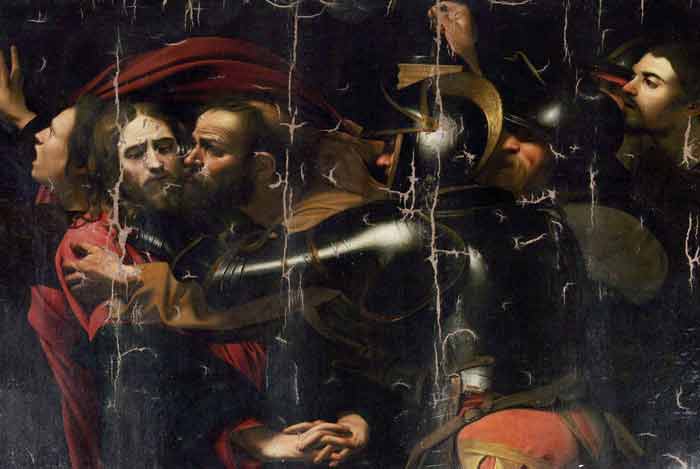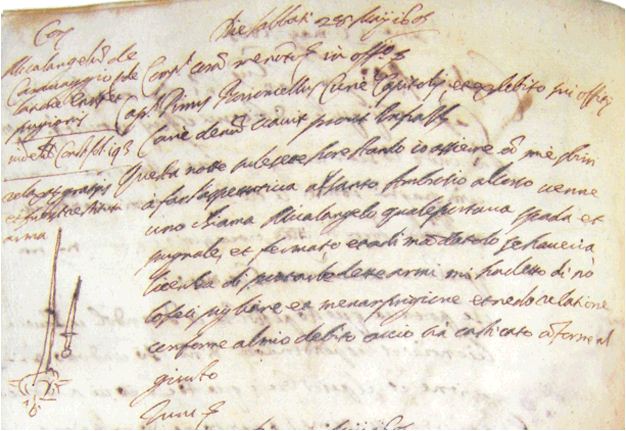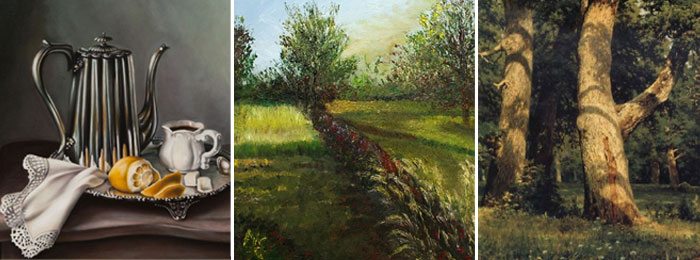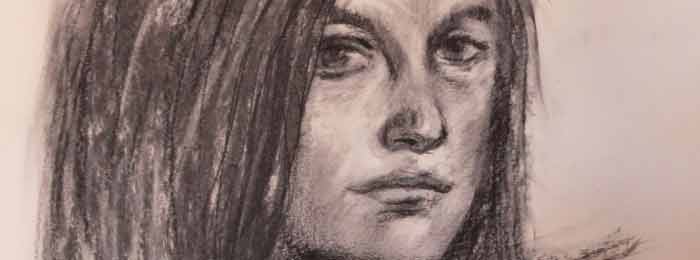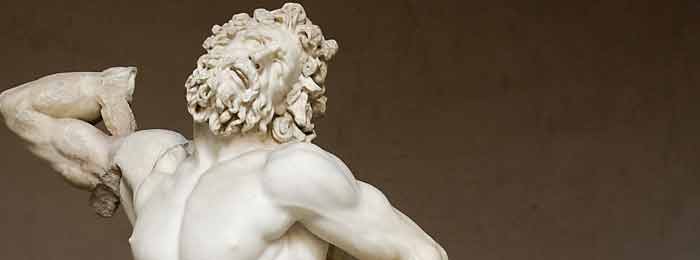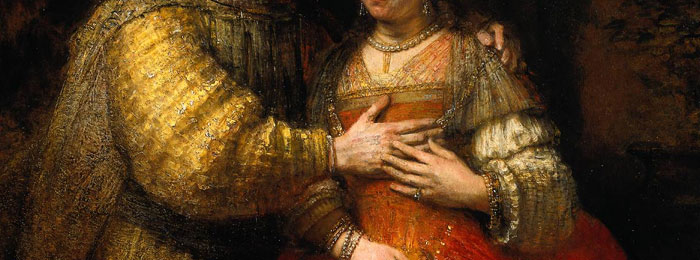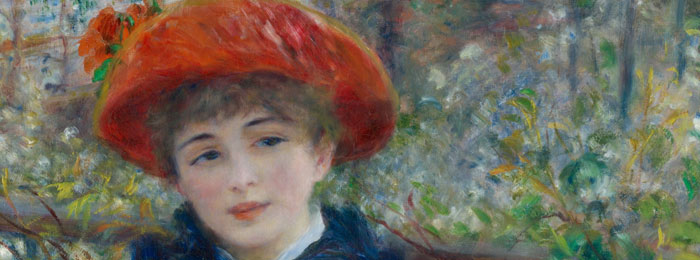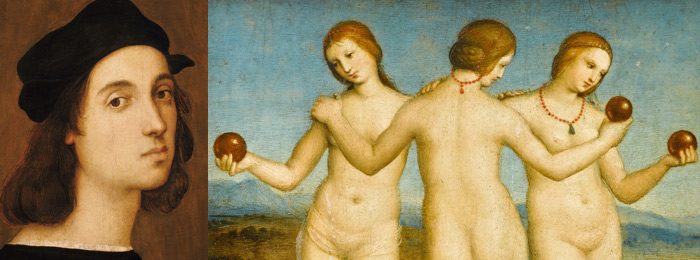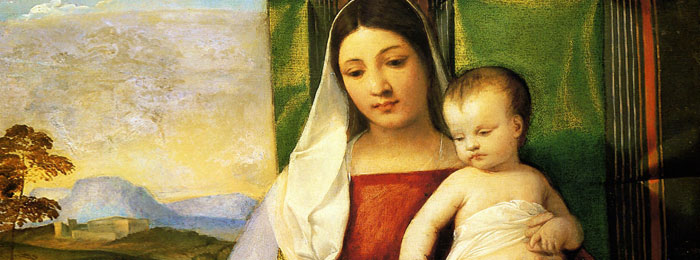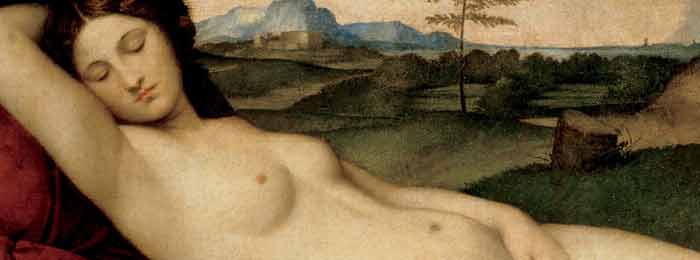On 3 Jan, 2016 With
Stolen Caravaggio Painting Barely reported here in the U.S., a version of Caravaggio’s 17th century masterpiece, the Taking of Christ (Judas’ Kiss) was stolen from the Museum of Western and Eastern Art in Odessa, Ukraine and has been recently uncovered at a Moscow online auction. The dramatic painting dating back to 1602 by the Italian Baroque master, Michelangelo Merisi da Caravaggio, depicts Judas embracing Our Lord and betraying Him with a kiss in the Garden of Gethsemane, a very apropos theme as we commemorate these events during this most Holy Week. The National Gallery of Art has a greatanalysis of this painting, for those who are interested in learning more about it. Reuters reported that the thieves “entered through a…
Read More
On 1 Jan, 2016 With
Caravaggio’s crimes exposed in Rome’s police files Michelangelo Merisi, aka Caravaggio, was notoriously bad-tempered and violent, constantly getting into physical altercations, confident that his moneyed patrons would fish him out of scrape after scrape. They mainly did, as it happened, and when they didn’t, he just skipped town for a while until the heat was off him. The stories about him have become part of his legend — the bad boy artist who lived fast, died young and left a sunstroked/syphilitic/stabbed/lead poisoned corpse — and it’s difficult to tell fact from gossip. Rome’s State Archives contain a myriad primary documents detailing Caravaggio’s many brushes with the law (among other information about his life and work) but until recently they were on…
Read More
On 29 Nov, 2015 With
Big thanks to all Web Art Academy Survey participants.
We are grateful to all supporters, who voted for the winners.
And the Winners are:
…
Read More
On 18 Oct, 2015 With
Thank you for your feedback!
Every day we receive new comments from you, our readers, and really appreciate your feedback!
As promised in the Web Art Academy Survey, we awarded the full Web Academy Membership!
And the winner is: Barbara
Here is what Barbara says:
“I am 67 years old, I am trying to draw at least once a week.
I have a masters in mixed media sculpture from a school in the 80s that taught creativity is more important than technique. I did not study drawing or painting and am pursuing that now…
I would like to learn alla-prima techniques. Actually, as a beginner I would like to know anything regarding any of the techniques.
My main challenge in art is drawing. But I am now enrolled in the Drawing Academy course. And, I am trying to draw figures from life at least once a week.
In painting, everything is a challenge, mixing colors, technique, contrast, composition, edges etc. etc. I can only learn learn learn…
Read More
On 4 Oct, 2015 With
What the Old Masters knew about Anatomy Laocoon and the Apollo Belvedere – nothing had ever been seen to equal the honours with which these statues were surrounded. Brought out of the earth, they were transported through the towns and escorted by a stately cortege to the places they were to occupy in the palaces of the Pope or the Duke. The court of Lorenzo the Magnificent, at Florence, Brought together a great many of the humanists and artists of the time and from their daily contact a revival of Greek Culture took place. Artists began to perceive, that the Grecian sculptures possessed an even deeper significance than they had heretofore found in them. They saw that these works represented…
Read More
On 31 Aug, 2015 With
Rembrandt, who is thought to have learned from Jacob van Swanenburgh and Pieter Lastmann, no doubt took stylistic cues from the Flemish Technique, the Venetian Technique, and the Direct Painting Technique. When observing his work, one can see that he experimented freely with them, moving between them, but he most certainly employed them all. Over time, as he learned each method, he incorporated aspects from all into a his style—while, of course, adding innovations of his own. Some of his paintings utilize wood as a canvas, as was common with the Flemish Technique, which he appears to have used predominantly in those works. In addition to this, a few of his small studies on wood panels seem to have utilized…
Read More
On 28 Aug, 2015 With
Renoir’s Palette Pierre-Auguste Renoir was a French artist who was a leading painter in the development of the Impressionist style. As a celebrator of beauty, and especially feminine sensuality, it has been said that “Renoir is the final representative of a tradition which runs directly from Rubens to Watteau.” Renoir’s paintings are notable for their vibrant light and saturated color, most often focusing on people in intimate and candid compositions. The female nude was one of his primary subjects. In characteristic Impressionist style, Renoir suggested the details of a scene through freely brushed touches of color, so that his figures softly fuse with one another and their surroundings. One of the best known Impressionist works is Renoir’s 1876 Dance at Le…
Read More
On 23 Aug, 2015 With
How to paint in style of Raphael The Three Graces is an oil painting by Italian painter Raphael, housed in the Musée Condé of Chantilly, France. The date of origin has not been positively determined, though it seems to have been painted at some point after his arrival to study with Pietro Perugino in about 1500, possibly 1503-1505. According to James Patrick in 2007’s Renaissance and Reformation, the painting represents the first time that Raphael had depicted the nude female form in front and back views. The Three Graces is an oil painting by Italian painter Raphael. The date of origin has not been positively determined, though it seems to have been painted at some point after his arrival to…
Read More
On 23 Aug, 2015 With
Oil painting techniques:Titian’s Palette Titian, the greatest Italian Renaissance painter of the Venetian school. He was recognized early in his own lifetime as a supremely great painter, and his reputation has in the intervening centuries never suffered a decline. Titian was one of the most versatile of Italian painters, equally adept with portraits, landscape backgrounds, and mythological and religious subjects. His painting methods, particularly in the application and use of color, would exercise a profound influence not only on painters of the Italian Renaissance, but on future generations of Western art. In 1590 the art theorist Giovanni Lomazzo declared him “the sun amidst small stars not only among the Italians but all the painters of the world.” During the course…
Read More
On 18 Aug, 2015 With
Venetian Painting Techniques The painting techniques employed by Northern Renaissance artists strongly influenced the work of renowned painters, such as Titian and Giorgione, during the Italian Renaissance. Venetian artists also greatly impacted the styles of this period, notably the Van Eyck brothers. The oil painting techniques developed by these Flemish painters around the year 1400 combined the use of egg tempera and oil painting, with the underpainting being created using a grisaille technique of tempera, while pure colored oil glazes were carefully applied on top. This combination painting technique added remarkable lustre to their small panel paintings, resulting in striking jewel-tones, the most vivid hallmark of the brothers’ famous style. Prior to the Van Eyck brothers’ success with their combination…
Read More


